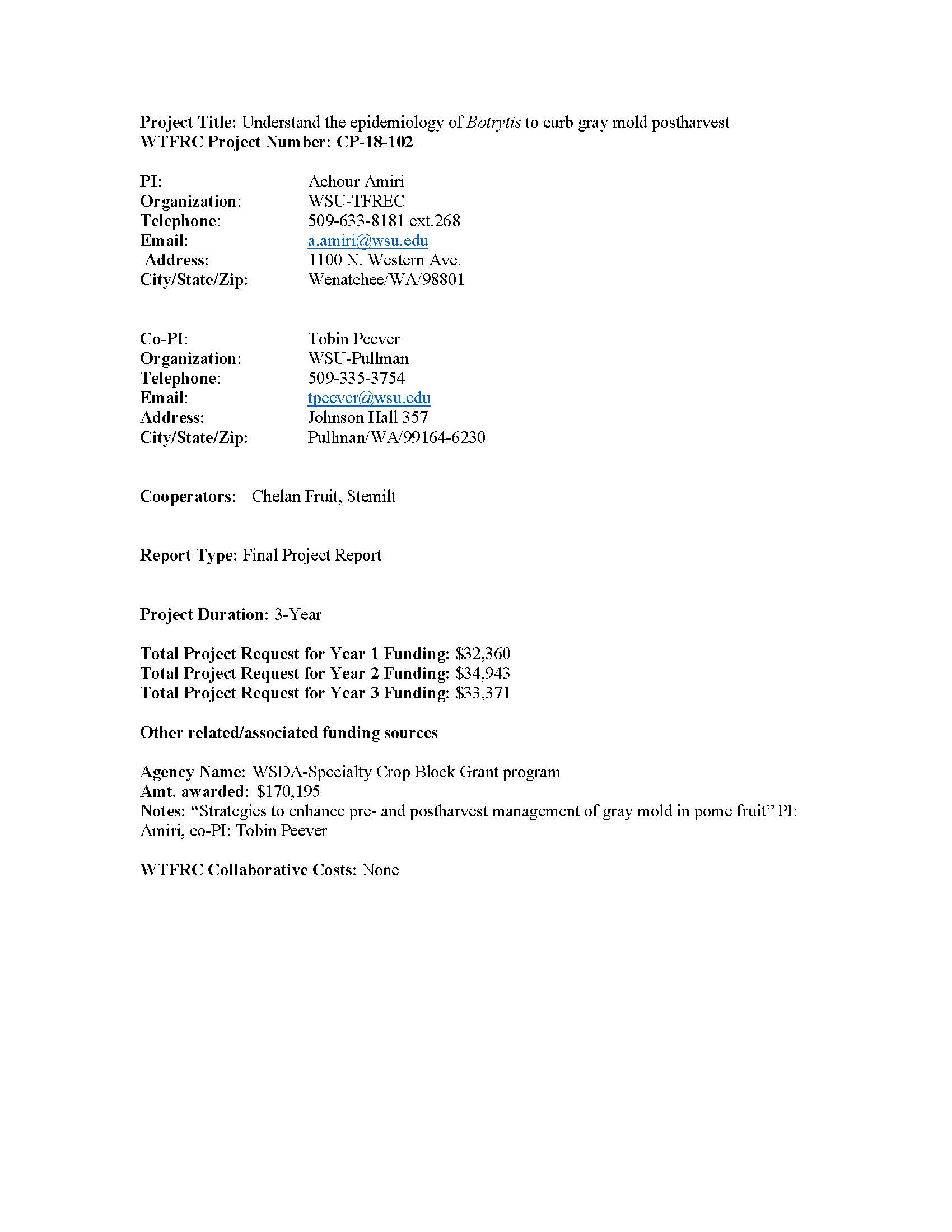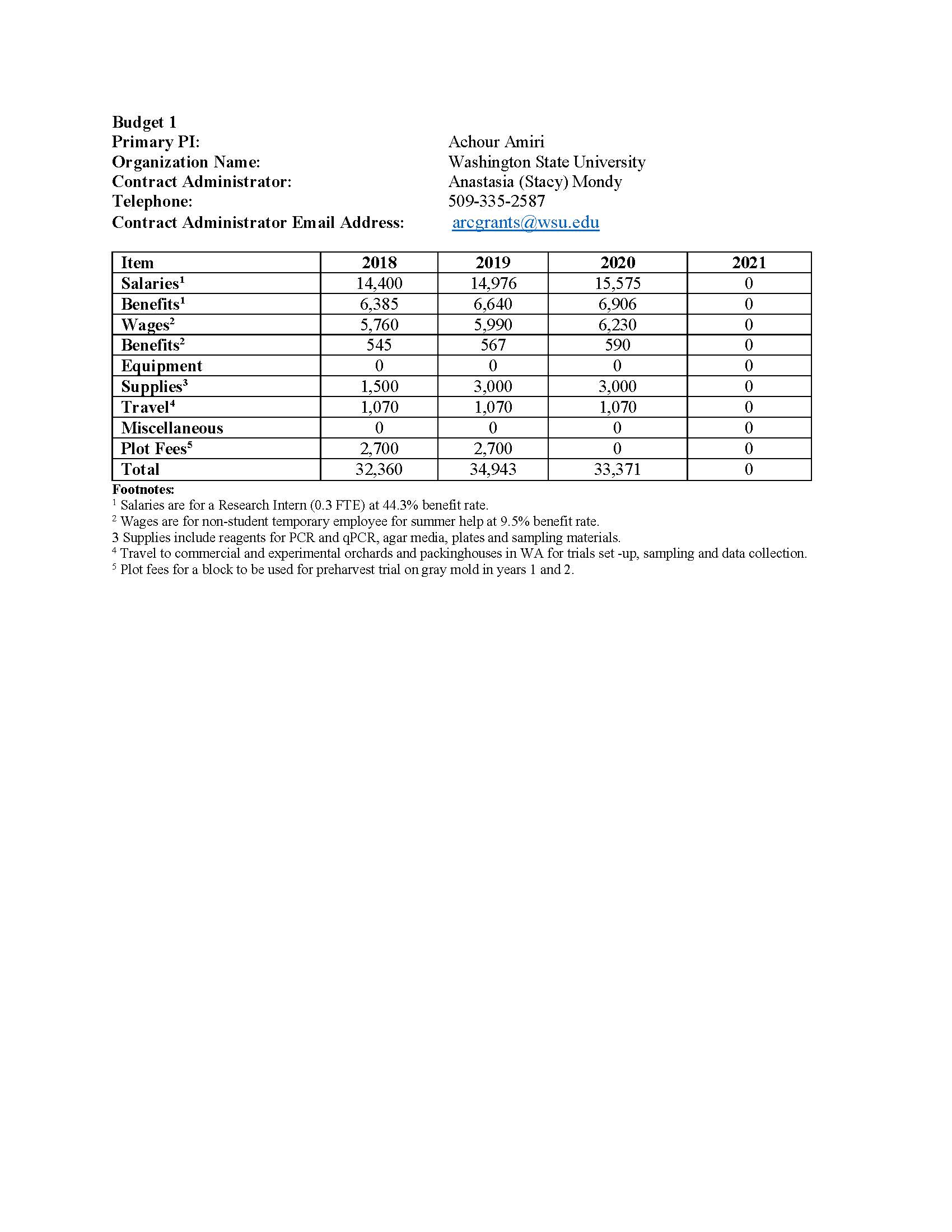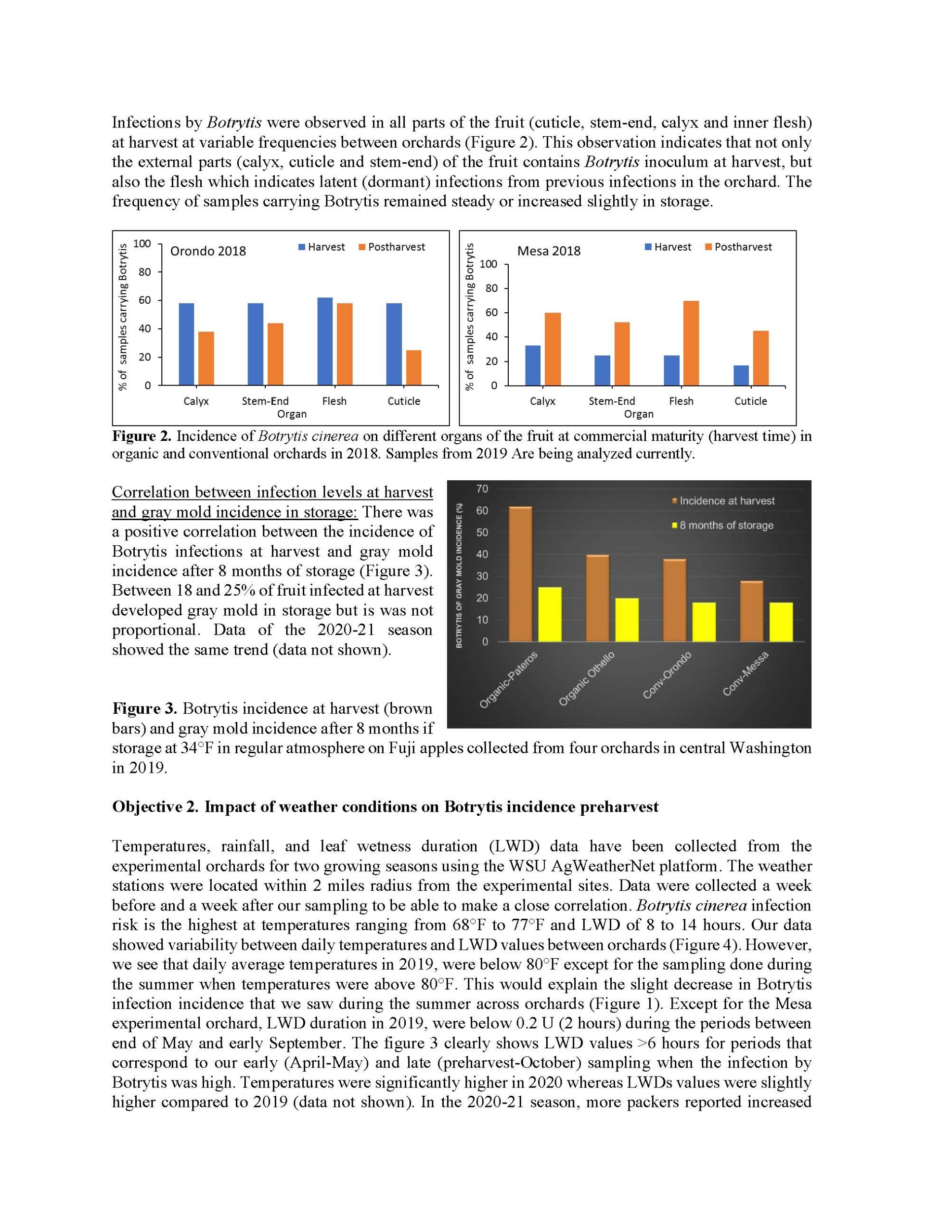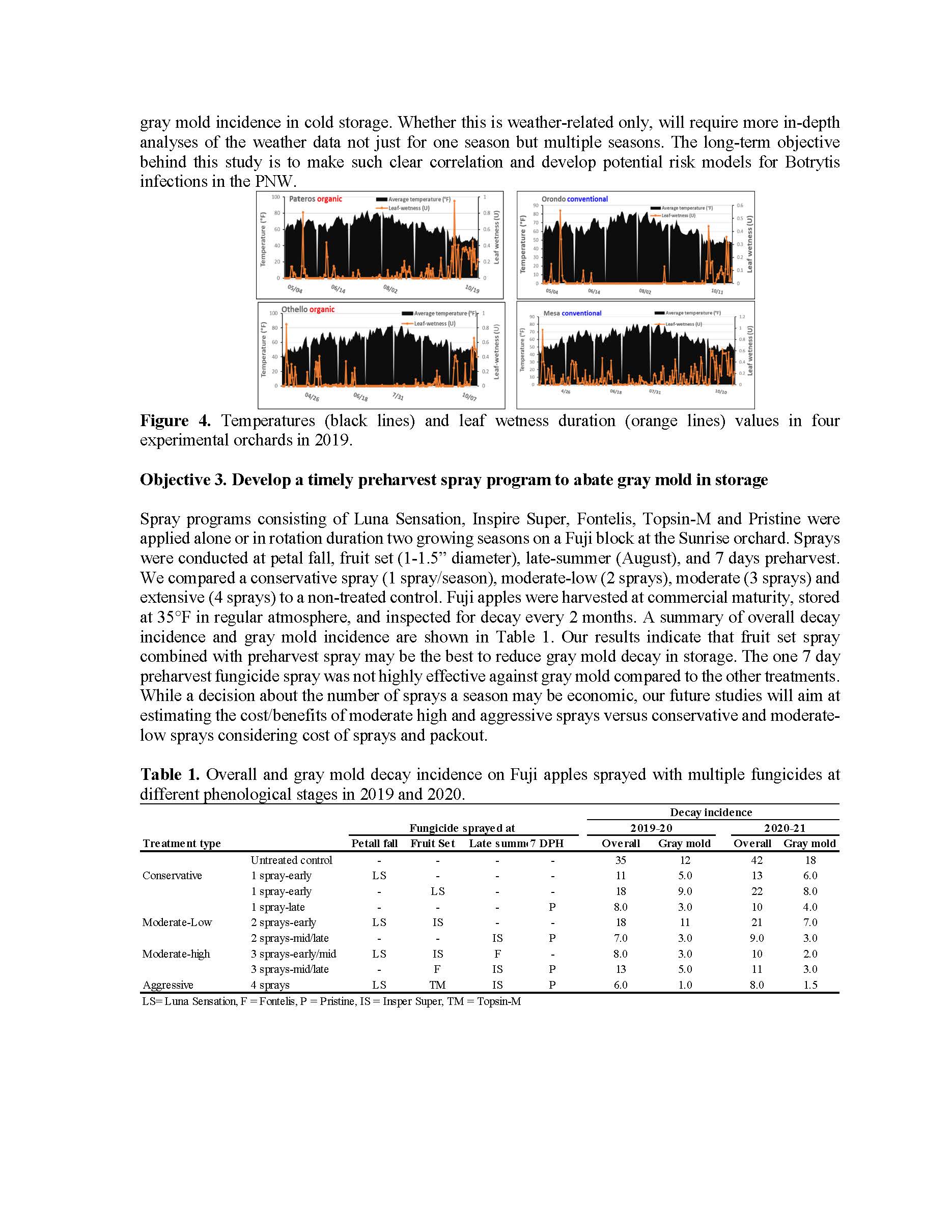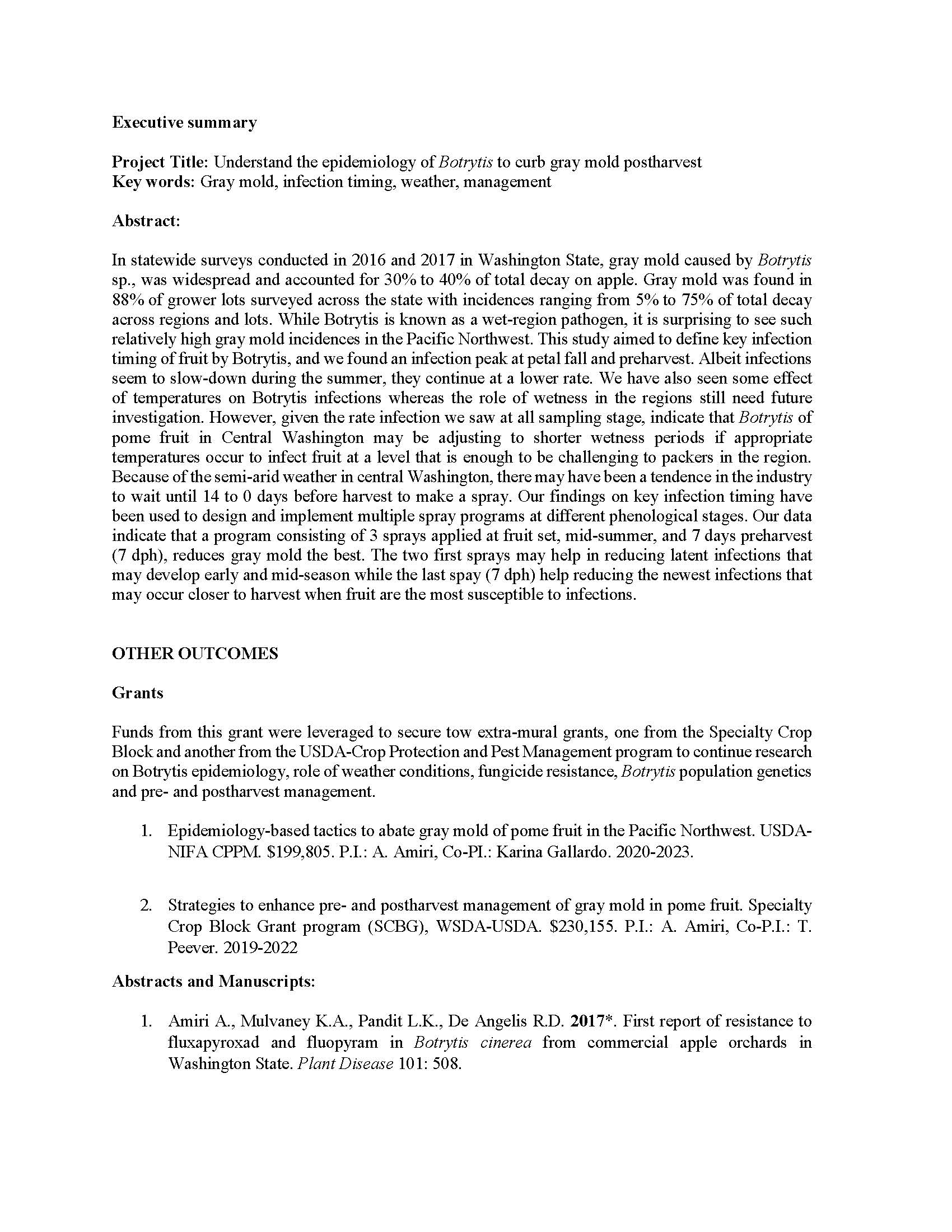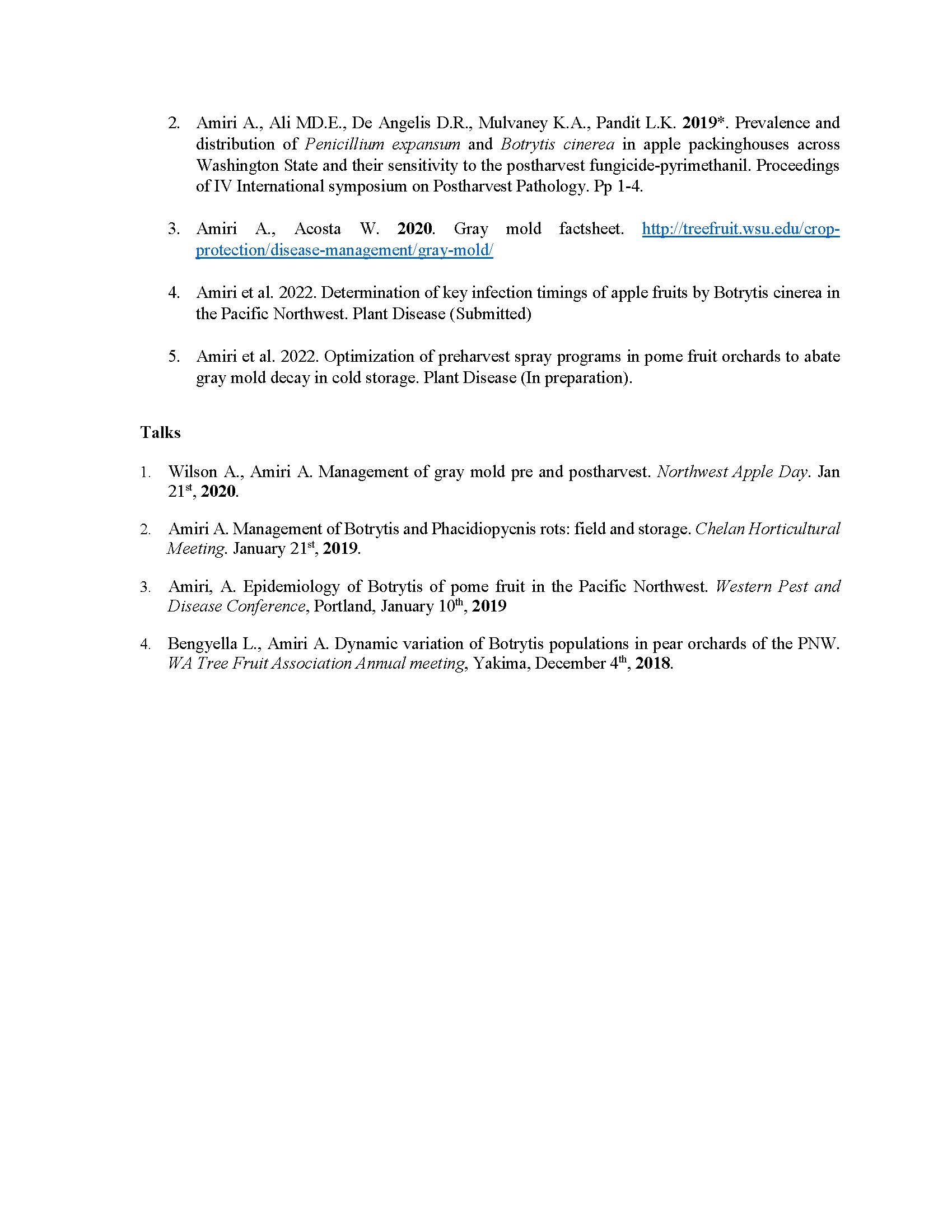Understand the epidemiology of Botrytis to curb gray mold postharvest
Author: Achour Amiri
Published: 2022
Summary: In statewide surveys conducted in 2016 and 2017 in Washington State, gray mold caused by Botrytis sp., was widespread and accounted for 30% to 40% of total decay on apple. Gray mold was found in 88% of grower lots surveyed across the state with incidences ranging from 5% to 75% of total decay across regions and lots. While Botrytis is known as a wet-region pathogen, it is surprising to see such relatively high gray mold incidences in the Pacific Northwest. This study aimed to define key infection timing of fruit by Botrytis, and we found an infection peak at petal fall and preharvest. Albeit infections seem to slow-down during the summer, they continue at a lower rate. We have also seen some effect of temperatures on Botrytis infections whereas the role of wetness in the regions still need future investigation. However, given the rate infection we saw at all sampling stage, indicate that Botrytis of pome fruit in Central Washington may be adjusting to shorter wetness periods if appropriate temperatures occur to infect fruit at a level that is enough to be challenging to packers in the region. Because of the semi-arid weather in central Washington, there may have been a tendence in the industry to wait until 14 to 0 days before harvest to make a spray. Our findings on key infection timing have been used to design and implement multiple spray programs at different phenological stages. Our data indicate that a program consisting of 3 sprays applied at fruit set, mid-summer, and 7 days preharvest (7 dph), reduces gray mold the best. The two first sprays may help in reducing latent infections that may develop early and mid-season while the last spay (7 dph) help reducing the newest infections that may occur closer to harvest when fruit are the most susceptible to infections
Keywords:

